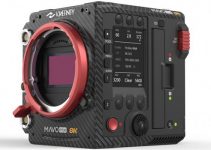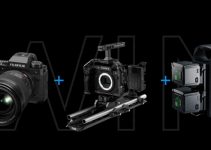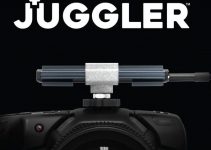Assimilate’s SCRATCH software is not only a premier DI solution delivering real-time data management of dailies, conforming, editing, advanced colour grading, 3D compositing, finishing and mastering for your projects, but it can also be used as a platform than efficiently can help you to create a DCP package for theatrical exhibition of your film or any other piece of content.
Some time ago we covered a great tutorial by the UK-based filmmaker Danny Lacey on how to create a DCP at no cost using OpenDCP on your Mac or PC, and today will see an alternative way to create a DCP this time by utilizing SCRATCH. The following video provides in-depth information on how to convert your footage into XYZ color space, exporting it in DCI-compliant JPEG 2000 codec, and finally, use a freeware wrapping tool to create your DCP.
SCRATCH: DCP-authoring from ASSIMILATE on Vimeo.
There are certain advantages that come with the SCRATCH workflow when creating a DCP. In the first place, the software gives you a plenty of options for colour space management which means that you can use any footage in any colour space such as sRGB, P3, Rec.709, Rec.2020, Log/film, etc. for the XYZ colour space conversion. You can even use the SCRATCH internal colour tools for further tweaks and adjustments of the final DCI compliant look of the footage.
SCRATCH is also a significantly faster encoder compared to the other free software solutions for creating DCP providing the ability to check the result of encoding by loading back the JPEG 2000 files back in real-time along with the option to re-render separate parts of the content if there is a necessity to change something at the last moment.
One of the essential things that you should be aware of, though, is that when using SCRATCH for XYZ conversion all the clips that you are about to convert should be in the same colour space.
The one thing that I definitely like about SCRATCH is that after the XYZ conversion you can easily preview the rendered JPEG2000 sequence directly in SCRATCH in both XYZ or any other colour space, thus eliminating the need to have a separate player such as the Stereoscopic Player that will allow you to preview the DCP on your computer.
This is great option because now the process saves you a ton of time, compared to the standard OpenDCP workflow where in order to create the compliant JPEG 2000 files, you should convert your ProRes or DNxHD master file into 16-bit TIFF or DPX sequence in advance using Adobe After Effects, which is actually the most time-consuming part of the process.
Once you’ve got the JPEG 2000 sequence rendered from SCRATCH you can use a free software called Digital Cinema Package Creator or OpenDCP for the final stage of creating both video and audio MXF files and then wrapping up the actual DCP in the end.
[via Wolf Crow]
Disclaimer: As an Amazon Associate partner and participant in B&H and Adorama Affiliate programmes, we earn a small comission from each purchase made through the affiliate links listed above at no additional cost to you.





As someone who needs to create DCP’s on a weekly basis, thank you for this! EDIT: Never mind, cost is ridiculous.
I’m glad that we can help you! Cheers,